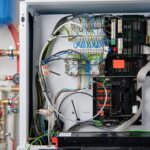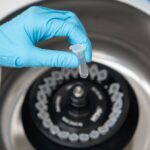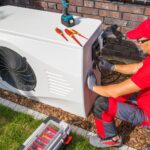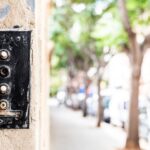In the unpredictable world of power outages, a home backup generator is your silent ally, ready to restore light when darkness falls. But to unlock its full potential, the real magic happens with the transfer switch—an essential component that requires attention and expertise. Understanding and addressing the common issues associated with its connection and testing is critical. Embrace the journey of discovering how seamless power transitions can transform your energy management experience and redefine energy independence.
- Grasp the core functions of a home backup generator transfer switch and the critical role it plays in linking your generator to the household grid.
- Identify and troubleshoot common connection issues that can hinder seamless operation and how to address these challenges effectively.
- Learn about the vital testing procedures that ensure your transfer switch is prepared to perform optimally during an emergency.
By delving into this guide, readers will not only secure reliable backup power but also enhance safety and performance with thorough and proactive upkeep. Learn how to navigate the nuances of generator connections and testing to achieve uninterrupted power whenever it’s needed most.
Understanding Home Backup Generator Transfer Switch Basics: Connection and Testing Essentials
A home backup generator transfer switch is a crucial component in maintaining uninterrupted power supply during outages. This device enables a seamless transition of your home’s electrical load from the main utility to a generator, ensuring that essential systems remain operational.
The transfer switch acts as an intermediary in the connection process, preventing back-feeding—which can pose significant safety hazards. By automatically or manually switching the source of electricity, a transfer switch plays a pivotal role in guaranteeing your home’s electrical safety.
Proper testing of the transfer switch is equally important. Testing ensures that the switch operates correctly during an emergency. Regular testing routines can help detect potential issues before they lead to system failures, maintaining reliable power management.
Common Connection Issues in Home Backup Generator Systems
When connecting a backup generator to your home, several connection issues may arise. Wiring mistakes are among the most frequent problems encountered during the installation process. Misidentification of wires or incorrect connections can lead to system malfunctions or even damage to electrical components.
Compatibility challenges also dominate the list of common issues. Not every generator and transfer switch combination can be connected seamlessly. It’s essential to ensure that all components are compatible to avoid performance issues and errors. Consulting the manufacturer’s guidelines for both the generator and the transfer switch can prevent such problems.
Addressing these issues involves careful inspection of wiring connections and compatibility checks. Employing professional assistance can also minimize risk, ensuring that your backup power system functions smoothly when needed most.
Effective Testing Procedures for Home Backup Generator Transfer Switches
Ensuring your backup generator transfer switch functions effectively during a power outage is crucial for maintaining an uninterrupted power supply. Regular testing not only enhances reliability but also supports safety and efficiency in power management systems.
Begin with a visual inspection of your transfer switch. Look for any obvious signs of wear or damage, such as burnt wiring or corrosion. Addressing these issues before conducting functional tests can prevent unexpected system failures.
Next, carry out a manual transfer test. Switch the system to the generator mode to ensure the transfer switch initiates the connection seamlessly. This test simulates a real power outage scenario, allowing you to observe and verify that all circuits receive power from the generator as expected.
Robust safety checks are integral to this process. Confirm that the transfer switch isolates the utility power source from the generator to prevent backfeeding, a dangerous condition that can cause damage to the electrical grid and pose risks to utility workers.
Incorporating a routine testing schedule is essential for backup system reliability. Opt for monthly or quarterly tests depending on your usage and the manufacturer’s recommendations. Consistent testing not only identifies potential issues early but also keeps your system in optimal condition.
Finally, document every test and its results. This ongoing log provides valuable insights into your system’s performance and helps in troubleshooting recurring problems. It serves as a reference for professional inspections and maintenance.
By following these effective testing procedures, you can be confident that your home backup generator’s transfer switch will function seamlessly when it’s needed the most.
Frequently Asked Questions About Home Backup Generator Transfer Switches
What is a transfer switch in a home backup generator system?
A transfer switch connects the generator to your home’s electrical circuit automatically or manually during outages.
Why is testing a transfer switch important?
Regular testing ensures the transfer switch functions correctly and safely during a power outage.
How often should I test my home backup generator’s transfer switch?
Testing should be done monthly to verify functionality and safety.
What are common problems encountered during connection?
Common issues include wiring mistakes and compatibility challenges. Ensure professional installation for optimal results.
Can I install a transfer switch myself?
It’s recommended to hire a certified electrician due to the complexity and safety requirements involved.
What safety precautions should I take when testing?
Ensure the system is off, follow the manufacturer’s instructions, and use proper personal protective equipment.





